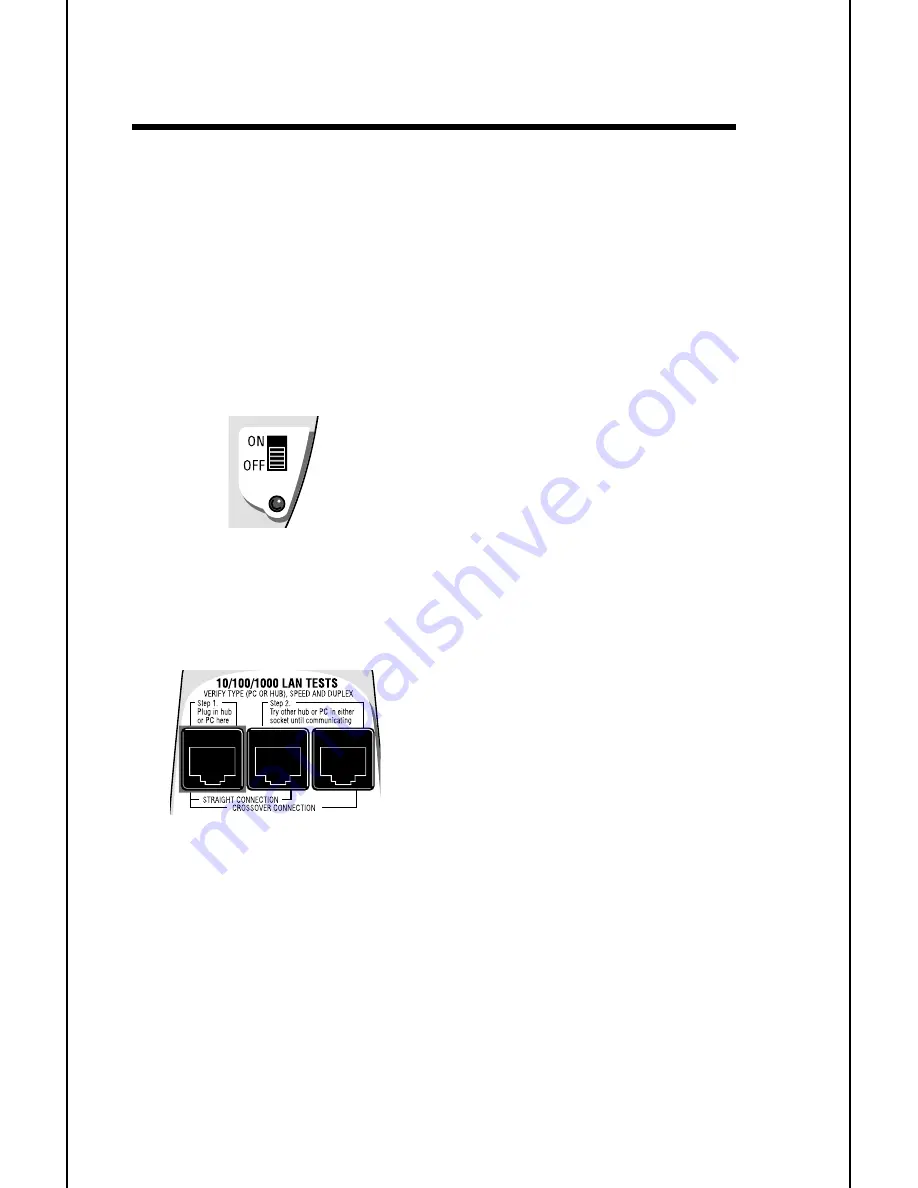
Section IV. Learning the Main Unit's Faceplate
The TVR1000 Main Unit can be connected to a
single port
of any
10, 100 or 1000 Base-T device and it can be inserted
inline
between
any two LAN devices without disrupting LAN communications.
The Main Unit performs the bulk of the tests. The Remote Probe
(detailed later in this manual) adds the ability to trace cable loca-
tions and determine the pairs configuration of a cable. It is used with
the Main Unit to perform its operations.
The Main Unit performs a self-test each time it is powered ON (this
is indicated by a series of flashing LEDs). If the TVR1000 has had
no activity for 30 minutes, the battery saver feature will turn the tes-
ter OFF. If the power LED is red, it is time to replace the 9V battery.
1) Display the speed and duplex. If a device is capable of 10,100
and 1000 all 3 speed LED(s) will light. Color indicates duplex.
2) Verify if a device is wired as a hub, switch or PC and indicate if
Data and/or Link pulses are present.
3) Detects the presence of Power over Ethernet (PoE) and indicates
whether it is endspan or midspan.
4) Make an
inline
connection between two devices to determine the
negotiated speed and duplex of the link and test the need for a
straight thru or crossover cable. The
inline
mode does not disrupt
10
Power “ON/OFF” and self-test
Turns all Main Unit power ON or OFF.
Battery saver feature: 30 minutes
10/100/1000 LAN TESTS Jacks
The Main Unit's upper RJ45 jacks per-
form the following tests (details of the
tests follow later in this section)













































